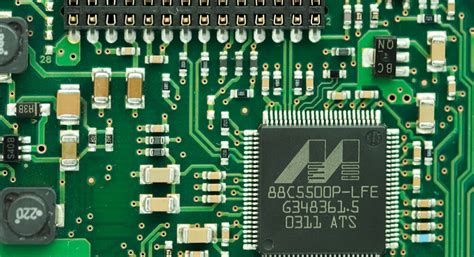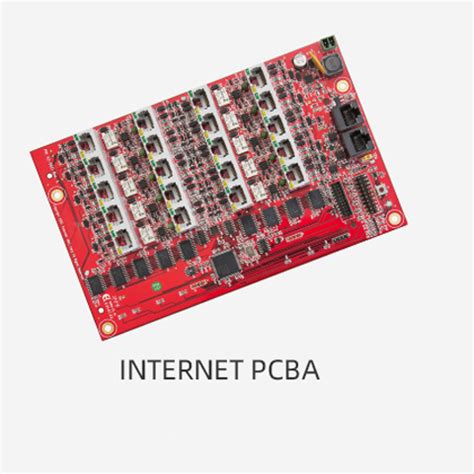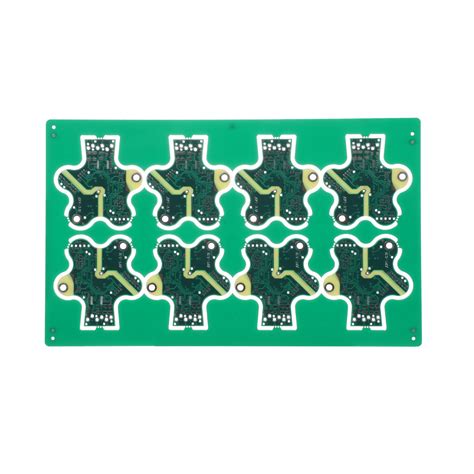Mastering Circuits Assembly: Techniques for Optimal Performance
Key Takeaways
In the realm of pcb assembly, understanding the intricacies of the process is pivotal for achieving optimal performance. The techniques outlined in this article emphasize the importance of a thorough grasp of the fundamental principles underlying pcba. By employing essential tools and equipment tailored for efficient circuit assembly, practitioners can significantly minimize errors and enhance productivity. Best practices in circuit design are instrumental in creating layouts that not only optimize space but also prioritize reliability and functionality. Furthermore, applying effective techniques can lead to enhanced efficiency throughout the assembly process, ensuring that each step is executed with precision. Proactive troubleshooting can address common issues before they escalate, thereby maintaining quality control and ensuring a reliable final product. Ultimately, mastering these key aspects will enable professionals to elevate their capabilities in circuits assembly, paving the way for innovative solutions in future projects.
Introduction to Circuits Assembly: Understanding the Fundamentals
In the realm of pcb assembly, understanding the fundamentals of circuits assembly is crucial for ensuring optimal performance and reliability. Circuit assembly, often referred to as pcba, encompasses various processes that integrate electronic components onto a printed circuit board (PCB). These processes include soldering, placing components, and testing the assembled circuits. A firm grasp of these fundamentals enables engineers and technicians to develop efficient workflows that enhance productivity and maintain the integrity of their designs.
A well-organized approach to circuits assembly involves meticulous attention to detail, particularly during the design phase. Each component needs careful consideration regarding placement and orientation to minimize potential errors during manufacturing. The choice of materials is equally important; using high-quality solders and components can significantly improve performance and reduce issues in functionality.
To further illustrate the significance of these fundamentals in improving circuit assembly outcomes, consider the table below:
| Fundamental Aspect | Importance |
|---|---|
| Component Placement | Reduces errors during soldering |
| Solder Quality | Enhances electrical connections |
| Testing Procedures | Identifies defects early in production |
“A well-executed circuit assembly process not only enhances reliability but also contributes to a smoother production flow.”
By understanding these fundamental aspects, professionals can cultivate an environment that promotes innovation while addressing common challenges in circuit assembly. Emphasizing best practices at this stage lays a strong foundation for developing more advanced techniques tailored for complex assemblies in future projects.
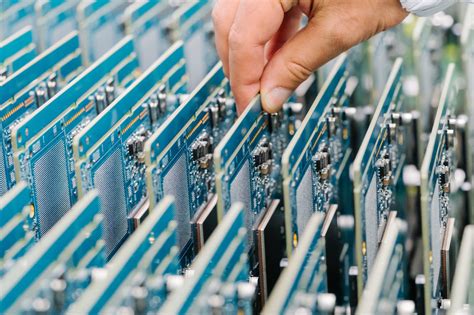
Essential Tools and Equipment for Efficient Circuit Assembly
In the realm of pcb assembly, having the right tools and equipment is paramount to achieving efficiency and reliability. Essential items include soldering iron and solder, which are critical for making strong, lasting connections between components on the printed circuit board. Utilizing a quality multimeter helps diagnose circuit issues efficiently, ensuring that all components are functioning correctly before assembly is complete. Another vital tool is the PCB holder, which keeps the board stable during soldering and assembly processes, enhancing precision. For surface mount technology, a reflow oven or a hot air rework station is indispensable for achieving optimal heat distribution when soldering. Additionally, programming tools for pCBAs (Printed Circuit Board Assemblies) facilitate smooth integration of embedded systems within your circuit. By investing in these essential tools and incorporating best practices for their use, one can significantly boost the overall performance of their projects in circuits assembly, leading to improved outcomes in efficiency and reliability.

Best Practices in Circuit Design for Optimal Performance
When venturing into pcb assembly, it becomes critical to adhere to certain best practices that ensure optimal performance. The foundation of a successful pcba lies in meticulous design principles. One of the first steps is to prioritize component placement; arranging components strategically can significantly reduce signal interference and enhance the electrical characteristics of the circuit. Additionally, effective use of ground planes helps minimize noise and supports better signal integrity.
Moreover, incorporating adequate trace widths is essential for current handling capacity and thermal management. It’s advisable to utilize simulation software during the design phase, allowing for the identification and rectification of potential errors before transitioning to assembly. This proactive approach not only streamlines the pcb assembly process but also safeguards against costly revisions that may arise from unforeseen design flaws.
Furthermore, paying attention to design for manufacturability (DFM) principles can optimize production efficiency and ensure that the assembly process is as smooth as possible. Professionals in pcba should also emphasize proper labeling of components on the schematic, which simplifies assembly and reduces errors during the production phase. By implementing these strategies, engineers can significantly enhance both the efficiency and reliability of their circuits, paving the way for high-performance results in their projects.
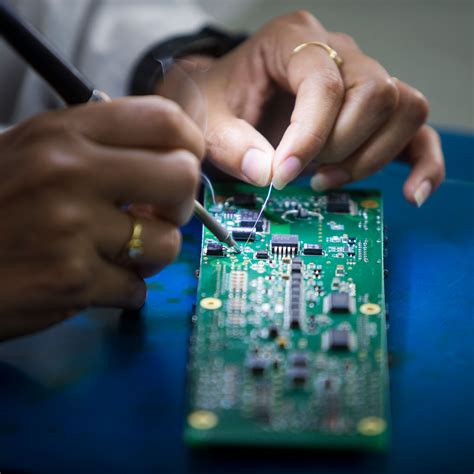
Techniques for Enhancing Efficiency in Circuit Assembly
In the realm of pcb assembly, enhancing efficiency is crucial to ensuring not only the reliability of the product but also the satisfaction of stakeholders involved in any electronic projects. By employing specific techniques such as optimizing the layout design and streamlining component placement, practitioners can significantly reduce the time and resources required for pcba. One effective method is to utilize automated assembly tools, which can perform tasks with precision and speed that manual processes often cannot match. Additionally, adopting a modular approach allows teams to work on separate sections of a circuit concurrently, thus improving overall workflow efficiency. It’s also vital to conduct regular training sessions to keep all team members informed about the latest assembly techniques and practices. Properly leveraging best practices in circuit design further contributes to minimizing mistakes and maximizing performance. Integrating these strategies not only leads to more efficient production but also enhances the overall quality of pcb assembly, ultimately resulting in superior end products that meet rigorous standards.
Troubleshooting Common Issues in Circuits Assembly
In the realm of pcb assembly and pcba, troubleshooting is a critical skill that can significantly impact the success of your projects. Often, issues arise during the assembly process that can hinder performance or lead to component failure. Identifying these problems early on is essential for maintaining efficiency and reliability. Common problems include poor solder connections, which can result in intermittent connectivity or full circuit failure. To address this, ensuring optimal temperature settings during soldering is vital, as too high or too low temperatures can lead to weak joints. Another frequent issue is component misalignment, which may occur due to misreading design files or using subpar assembly techniques. Utilizing proper tools and taking time to double-check component orientation before finalizing connections can help eliminate this risk.
Additionally, surface contamination on pcb assembly surfaces may affect solder adherence, resulting in weak circuits. Keeping your workspace clean and regularly inspecting for debris can prevent this complication. If you encounter signal integrity issues within your pcba, checking for grounding faults or inconsistent trace widths is advisable, as these factors greatly influence circuit performance. By actively implementing critical best practices and refining troubleshooting methods throughout the assembly process, one can enhance overall project outcomes while significantly minimizing potential setbacks in pcb assembly and pcba production.
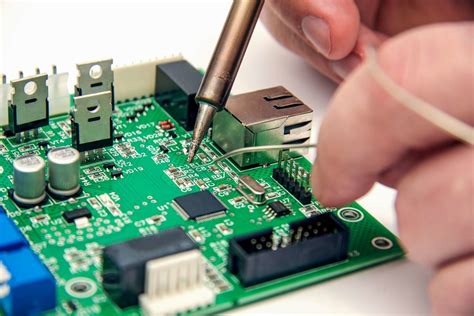
Quality Control Measures for Reliable Circuit Performance
In the realm of pcb assembly, implementing rigorous quality control measures is paramount to achieving reliable circuit performance. One fundamental technique is the use of comprehensive inspection methods throughout the pcba process. This begins with thorough visual examinations to identify any surface defects or misalignments that could compromise functionality. Incorporating automated optical inspection (AOI) systems enhances accuracy and efficiency by utilizing advanced imaging technology to detect faults that may be missed by the human eye. Furthermore, establishing clear metrics for performance testing, such as electrical testing and functional testing, ensures that each assembly meets stringent quality standards. It’s essential to document results meticulously, allowing for traceability and accountability while identifying trends in potential defects over time. Regular audits of both processes and materials are also critical; they help in enforcing best practices and ensuring that equipment remains in optimal condition. By prioritizing these quality control measures, manufacturers can significantly reduce errors, enhance reliability, and ultimately deliver superior products in the competitive landscape of circuit assembly.
Advanced Techniques for Complex Circuit Assemblies
In the realm of pcb assembly, transforming intricate designs into functional prototypes requires a mastery of advanced techniques. When working on complex assemblies, it is crucial to apply precision and attention to detail throughout the process. One recommended approach is implementing multi-layered designs effectively, which allow for more components in a limited space and improve overall performance. Additionally, employing automated assembly processes can significantly reduce errors associated with manual handling, enhancing the reliability of your pcba. For higher efficiency, consider utilizing optimized soldering techniques such as selective soldering or reflow soldering, which can lead to consistent thermal profiles essential for delicate components. Furthermore, adopting simulation software during the design phase aids in anticipating potential issues that may arise during assembly, thereby streamlining workflow and improving outcomes. Mastering these advanced techniques not only ensures optimal performance but also bolsters the adaptability of complex circuit assemblies in various applications.
Future Trends in Circuits Assembly: Innovations and Challenges
As the field of pcb assembly evolves, numerous innovations are arising that promise to reshape the landscape of pcba processes. One of the prominent trends is the integration of advanced automation technologies, which significantly enhance production efficiency. Automation not only accelerates the circuit assembly process but also minimizes human error, ensuring a higher level of accuracy and reliability. Alongside automation, the adoption of smart technologies such as artificial intelligence and machine learning is gaining traction. These tools provide predictive analytics that helps identify potential issues before they arise, streamlining troubleshooting efforts during assembly.
Additionally, there is an increasing focus on environmentally friendly practices within circuit assembly. Manufacturers are exploring sustainable materials and processes to reduce waste and improve sustainability in pcb assembly production. This shift not only aligns with global environmental goals but can also result in cost savings in the long run.
Furthermore, as electronic devices become more compact and complex, there is a rising challenge in designing efficient layouts that accommodate high-density assemblies. Innovative techniques for achieving optimal design layouts are crucial for overcoming this challenge. Enhanced simulation tools are increasingly becoming instrumental in achieving precise designs before physical assembly begins, thus increasing reliability during actual production.
Overall, while innovations in pcba technology present exciting opportunities for growth and improvement, they also come with challenges that require continuous adaptation and learning within the industry. Keeping abreast of these trends will be vital for professionals aiming to excel in circuits assembly while ensuring their projects achieve optimal performance.
Conclusion
In the realm of pcb assembly and pcba, mastering effective techniques and best practices is crucial for achieving optimal performance. Throughout this guide, we have explored a variety of essential strategies that enhance both efficiency and reliability in the circuit assembly process. By implementing these techniques, individuals can significantly improve their understanding of the core fundamentals and the intricacies involved in circuit design. Focusing on proper tools and equipment not only streamlines workflows but also leads to higher-quality results in complex projects. In addition, evaluating future trends offers insight into potential innovations that can reshape the landscape of circuit assembly, presenting new challenges as well as opportunities for improvement. As practitioners navigate these developments, maintaining a solid grasp on quality control measures is imperative to ensure reliable circuit performance and long-term success in their endeavors. By consolidating this knowledge, engineers and technicians alike can better prepare themselves for evolving demands within the field of pcb assembly.
FAQs
What is pcb assembly?
Printed circuit board (PCB) assembly, often referred to as pcba, is the process of assembling electronic components onto a PCB to create a functional circuit. This involves soldering components like resistors, capacitors, and integrated circuits onto the board to form the final electronic device.
What are some common techniques used in pcb assembly?
Several techniques are employed in pcb assembly, including Surface Mount Technology (SMT) and Through-Hole Technology (THT). SMT allows for components to be mounted directly onto the surface of the PCB, often leading to smaller and more efficient designs. THT involves inserting component leads through holes drilled in the PCB, which can be beneficial for larger components or when higher mechanical strength is required.
How can I ensure optimal performance in my pcba projects?
To ensure optimal performance in your pcba projects, it’s crucial to follow established best practices during both the design and assembly processes. This includes selecting high-quality components, using appropriate soldering techniques, and implementing effective quality control measures throughout production.
What tools do I need for efficient circuit assembly?
Essential tools for efficient circuit assembly include soldering irons, solder paste dispensers, pick-and-place machines for SMT components, and inspection equipment like magnifying glasses or microscope systems. These tools contribute significantly to precision and efficiency during the pcb assembly process.
How do I troubleshoot issues that arise during pcba?
Common issues in pcba can include incomplete solder joints or component misalignment. To troubleshoot these problems, one should begin with visual inspections, followed by more detailed tests like continuity checks using a multimeter. Identifying issues early is key to preventing larger problems down the line.


